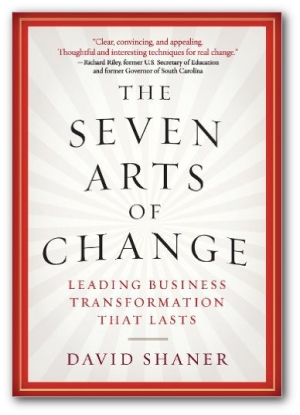Accountability: The Key to Resolving Project Issues
Challenges In Executive Project Sponsorship
Buy it now! |
eCameron took a serious look at project sponsorship by conducting a series on non-scientific interviews. Initially the focus was the healthcare industry. As patterns started to emerge, however, others outside of that industry expressed serious interest. To address that interest and better understand the larger issue we expanded the interviews to outside healthcare. Candid and confidential interviews were conducted with project related personnel including executives, sponsors, project managers, and Project Management Office (PMO) managers. In summary:
- Sponsorship is an issue in all business domains.
- Good sponsorship is an essential component in creating successful projects.
- Many issues are pervasive across industries.
- Sponsors need to work with project managers to design a successful project outcome.
- Sponsor roles are neither properly defined nor supported.
This white paper presents the results of the research and highlights areas where organizations need to improve to change their project success rates.
Get Recognized as a Leader: Four Core Leadership Actions
.gif)
Leaders make decisions. This requires a core set of actions to gather the best information, hear out the concerns of others, and making a decision that everyone will follow—even if there is not unanimous agreement with the decision. Although there are hundreds of actions leaders must take, there are four core actions that all great leaders do—listening, dialog and discussion, selling a vision, and eliminating blame. This session will discuss those actions in a roundtable format that we call a "What Would You Do?" session. In these sessions, the presenter acts as a moderator spending 10 to 15 minutes per topic working with the audience talking about what the action is, how to best do it, and hearing from the group on how they have carried out the action. This brings significant audience interaction, involvement, and broader education.
Build Your Leadership Style: Six Leadership Strategies
.gif)
Salespeople, Project managers, and business leaders, to name a few, need to change their leadership style for every situation. Situational leadership is more important for these roles than nearly any other role in an organization. Central to this leadership style is commanding the six core strategies—directive, expert, consensus, engaging, coaching, and affiliative. These sets leaders the foundation for building the most appropriate leadership style for the conditions surrounding the current events, people in the room, and external conditions. In this roundtable session, which we refer to as a "What Would You Do?" format, the audience debates the use of each strategy as the presenter poses various conditions and dilemmas that face leaders daily. This creates an educational, interactive and entertaining presentation that builds cohesiveness in your group and relationships that last long after your event.
Strategy-Execution Gaps
The statistics on strategy execution are dismal:
- 59% of middle managers fail at resolving conflicts in corporate strategy.
- 45% of middle managers cannot name one of the top five corporate goals.
- 64% of cross-department/functional issues are poorly resolved.
And maybe as you could expect from this:
- 53% of companies cannot react timely to new opportunities.
You do not need to be a rocket scientist to know that this trajectory is not going to launch most companies’ latest strategic plans successfully. In fact, these data might make you feel that middle management would be better suited as test dummies for the next generation of manned space-vehicle. Granted, the data show there is a dearth of leadership in middle management, but the executive tier has a culpable hand.
No Enterprise PMO Equals Poorly Managed Organization

From her corner office, the new executive decried, "Decentralize the PMO. Let each department be responsible for their own projects." Maybe she had made a pact with another executive for some other bit of power, or it could be she lost a power struggle and the PMO had to go, or possibly she has little regards for project management thinking it is a mechanical, blue collar discipline that methodically follows a recipe to execute each project. Bottom line, she is missing the point of the Project Management Office (PMO)—it is all about business goals. Unfortunately, for the company, decentralized PMOs provide little if any value. They are similar to distributed teamwork—an oxymoron. The concept is illogical.
The Politics of Risk

Risk is a risk in itself. It is risk for you if you dare bring it up. Have you ever identified the risk, in writing, that your boss' inherent inability to make decisions is going to sink the project? How about the company loss of market share will require laying off half the project team? Or, that the project manager has never had a successful project? These are CLMs (career limiting moves). Even mentioning such common risks as a company's inexperience in the project's domain is too risky to put in the risk register. It is as if management enjoys blissful ignorance and relishes the firefight that ensues. Cowboy mentality. Identifying risk, modeling mitigation plans, and compiling contingency are too boring compared to the thrill of disaster recovery.
Getting to Yes: Negotiating Agreement Without Giving In
Add To Cart |
|
| Author: | Roger Fisher, William L. Ury |
|---|---|
| Publisher: | Penguin Books |
| Released: | May 2011 |
| Type: | Softcover |
| Pages: | 240 |
| ISBN: | 978-0201835953 |
One of the primary tasks of a project manager is to negotiate—negotiate scope, negotiate for resources, negotiate for money, negotiate end dates, etc.—there is almost nothing that a project manager has as a give. Even in your personal life, negotiation skills are essential for dealing with everything from your kids' bedtime, to the price of your next car. Understanding the art and science of negotiation is critical. This book, especially in conjunction with one of our classes, is a great way to get you down the road to improving you negotiation skills. Don't be fooled though, negotiation takes practice.
The Seven Arts of Change: Leading Business Transformation That Lasts
Add To Cart |
|
| Author: | David Shaner |
|---|---|
| Publisher: | Union Square Press |
| Released: | November 2010 |
| Type: | Hardcover |
| Pages: | 184 |
| ISBN: | 978-0201835953 |
This book is currently under review, more details will be added when available
In my opinion, as a project manager, you cannot read too many books on handling change. Each gives you a different perspective on how to effectively deliver a project whose product is valuable. This is a lesser known book, but has a great perspective.
Many businesses try to change, but few succeed. At best, a few buzzwords and new reports become part of the company's structure. At worst, programs crash and burn, and the members of the organization become irreparably disillusioned with the revolving door of new-mission statements. According to David Shaner-a business consultant with a 100% success rate of change at companies including Duracell, Frito-Lay, Caesars Palace and Gillette-the problem is that those changes don't address either individuals or the corporate culture. They're only on the surface.
Your CRM Implementation Is Going To Fail
Customer Relationship Management (CRM) implementations fail at an alarming rate. For the last fourteen years, numerous independent parties have come up with the same dismal statistics. In fact, your implementation probably will not meet your goals either. The graphic above does not bode well for anyone heading out on that journey. To be sure, configuring the software is significantly more difficult that it appears at first glance. As much as one wants to blame Salesforce, Microsoft, or some other software vendor, though, the trouble lies much closer to home.
For the astute onlookers it is easy to tell when the implementation is going the awry. It is the argument over who is going to drive the project—IT or Sales and Marketing. Unfortunately, these are the wrong people to have in the discussion.
Disband Your PMO
After nearly 30 years of project work, I struggle to understand the role of a project management office (PMO). Even though, I have written of the pros and cons, and read a plethora of articles, opinions, and how-to guides little has been done to convince me that the PMO is reducing project failure. It seems to be nothing more than a tool to fill a void in leadership? Even the acronym, which is so widely thrown around, has little meaning as the "P" has no less than four meanings. It is an executive's crutch for their lack of understanding in how projects work. These, like other, unattended holes in the corporate accountability create opportunities for new and greater bureaucracies and empires that further obfuscate accountability.
Filling Execution Gaps
Available Worldwide |
|||||||||||||||
.png) |
|||||||||||||||
|
Filling Execution Gaps is available worldwide. Below are some options.
|
|||||||||||||||
 Limited Time Price $20.99 |
|||||||||||||||
 |
|||||||||||||||
| Book or Kindle |
|||||||||||||||
 |
|||||||||||||||
 |
|||||||||||||||
 |
|||||||||||||||
 |
|||||||||||||||
| Worldwide: Many other book sellers worldwide. |
.png)
 Twitter
Twitter Facebook
Facebook RSS
RSS Linkedin
Linkedin






